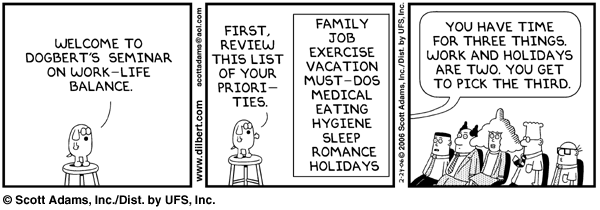
The year 2015 is almost over and the upcoming new year brings new opportunities and more chance for positive change. This time of the year is a great time not only to sum up all your previous achievements but also make new plans for the next one.
From the previous year, I’ve learned that no matter how sincere my desire to change is, I always struggle to achieve this. However, I’ve also found out that when I keep in mind the necessity to simplify my actions, it is easier to stick to the plan. This simplification of complexity involves two simple rules: “Focus” and “Do Fewer Things”. When you apply them in practice, I can guarantee that you will see the difference.
Focus.
A couple of years ago I read an excellent post by one of the top management employees who shared his observations about his most productive moments. He noticed that he finished most of his tasks on long intercontinental flights. When one day he made the joke that he should start flying internationally more often for productivity reasons, the light went off in his head. No Internet access, no distractions, just working on high priority to-do items, was the recipe for his success.

He began to place The Airplane Time each week on his calendar. This meant creating conditions as if he was in the air: working out of the office, disabling his phone, and shutting off network connection on his laptop. After months of using this technique, he was sure that this time was the most productive by far.
This post inspired me, so I tried this “Airplane Time” approach to planning my schedule. I can confirm that the hours when no one disturbed me, and I could entirely focus on my tasks were not only the most productive ones but also gave me the biggest feeling of fulfillment.
Doing fewer things.
Steven Covey wrote in his book “7 habits of highly effective people” that we play many roles in our lives, and the most important ones are the easiest to forget when planning time. The main reason for skipping the most important actions is that people try to do too much. The real winners are the ones that do fewer things but do them well.
Moreover, being productive is more like running a marathon than a sprint, so only regularly done activities can give you measurable results. One of the most efficient methods to limit your amount of work is to visualize your actual workflow on the Kanban Board. When you see all of your actions presented in one place, you can start limiting your work in progress (e.g., up to 3 tasks in progress) or even permanently remove some of the actions from your to-do list.

For me, the Kanban Board is an excellent tool for daily planning. Usually, I divide my tasks into three categories:
- things to do today that are on the calendar (status: In Progress on the Kanban - up to 5 things);
- things to do soon — I put these on my Kanban Board as Planned for This Week (up to 15 things);
- things to do someday but not urgently — I put these for later in the “To-Do Section” which I review while doing my weekly planning.
I regularly monitor and update my daily plans for 10 minutes each day, and once a week I plan a longer session to summarize what I have done during each week. I also use statistics generated by the application, which show me how much time I have spent during a week on different tasks, and how significant the progress is that I have made.
In the beginning, I avoided removing any of the tasks from my to-do list, but as time went by I learned to distinguish important work from urgent activities that did not bring any significant value, but seemed to be essential. When I finish a small but truly essential to-do item, I feel more satisfied than after beginning several less important ones. So, an excellent indication for me to choose the right task is the expected level of fulfillment, that I will have after completing it. The more fulfilling the task is, the more likely I will consider it to be important.
Summary
In 1926, Henry Ford, American industrialist and founder of Ford Motor Company, conducted experiments with interesting results: when you decrease your daily working hours from 10 to 8, and shorten the workweek from 6 days to 5, your productivity increases.
These results might be surprising for some of us, but we should keep in mind that if we work too much, we are going to become less efficient and productive. So, we should not work longer and longer, but rather we should look for prioritization and limit our work in progress, to complete the most important tasks first and feel satisfied with what we have done.
Undeniably, at the end of our lives we will likely regret spending so much of our lives the work treadmill, than on other activities that would have given us personal satisfaction.




